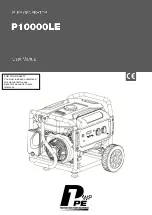
28
Glossary
1-phase sensor
Sensor that is clamped around the phase conductor which
measures the direction and magnitude of the current into the
grid.
3-phase sensor
This sensor senses the current flow on all three phases of the
grid connection at the same time.
3-stage charging
Charging method in which a battery is charged in three
stages, each with different characteristics.
Autonomy time
An indication of how long power can be provided to the
connected load in the event of a grid outage. This is
dependent on the load, the solar output and the capacity of
the connected batteries.
External relay
An electromechanical switch used to control load
management or activate backup power.
120° phase shift
Phase shift between L1-L2, L1-L3, L2-L3 to implement a
3-phase AC network.
+BAT/-BAT
Connection for voltage measurement.
Absorbed Glass Mat (AGM)
In a ‘normal’ AGM battery, the plates are placed next to each
other. Otherwise, they are similar to a spiral cell battery:
the electricity is stored in glass fibres. These batteries can
actually be deployed anywhere. The advantage lies in the
fact that it is possible to replace any of the batteries. You
can draw large currents without damaging the battery. The
specified service life is 5 to 10 years.
AC Local Out
The PowerRouter has a unique function that provides an
uninterrupted power supply in applications with a grid
connection. The PowerRouter can provide a steady voltage of
230 VAC/50 Hz even if the public grid fails. The PowerRouter
switches from grid electricity to solar energy and battery
current within milliseconds, with no interruption to the power
supply. If the grid fails, the PowerRouter is automatically
disconnected from the grid and will reconnect once the
grid is stable again. This protects the connected loads from
power disruptions.




































